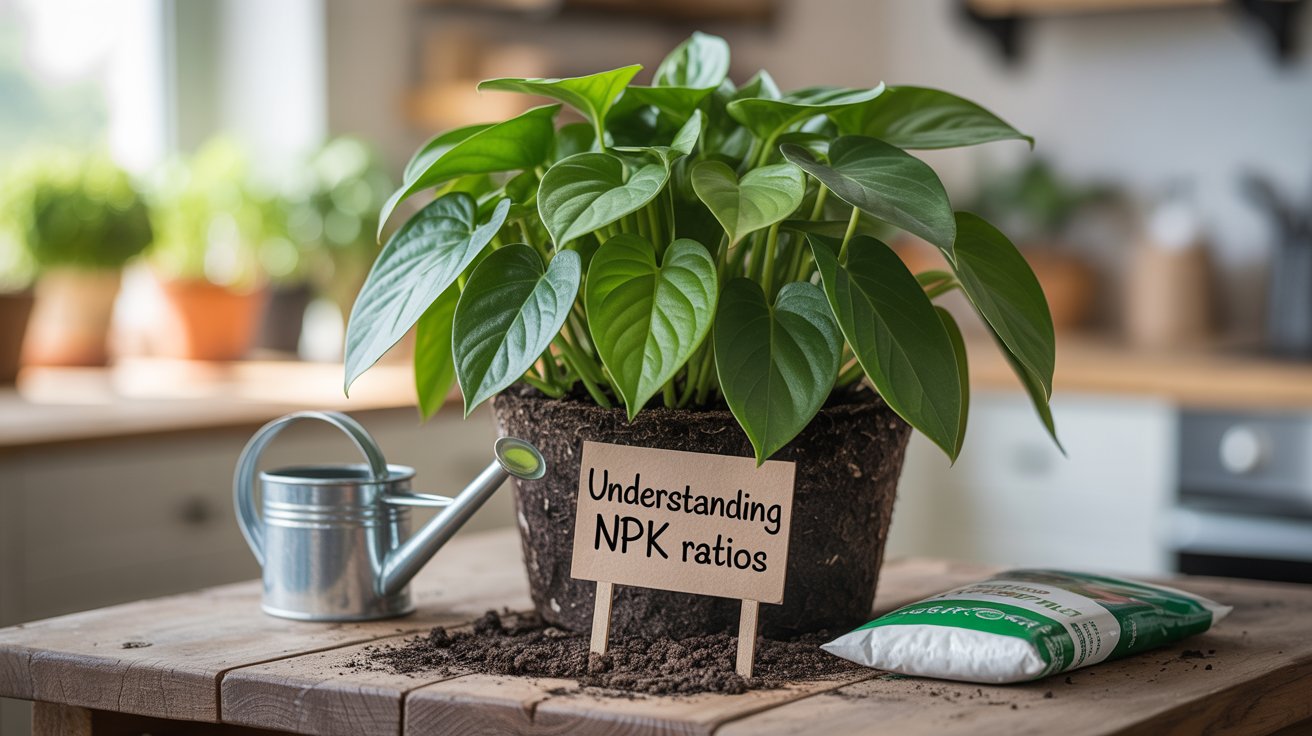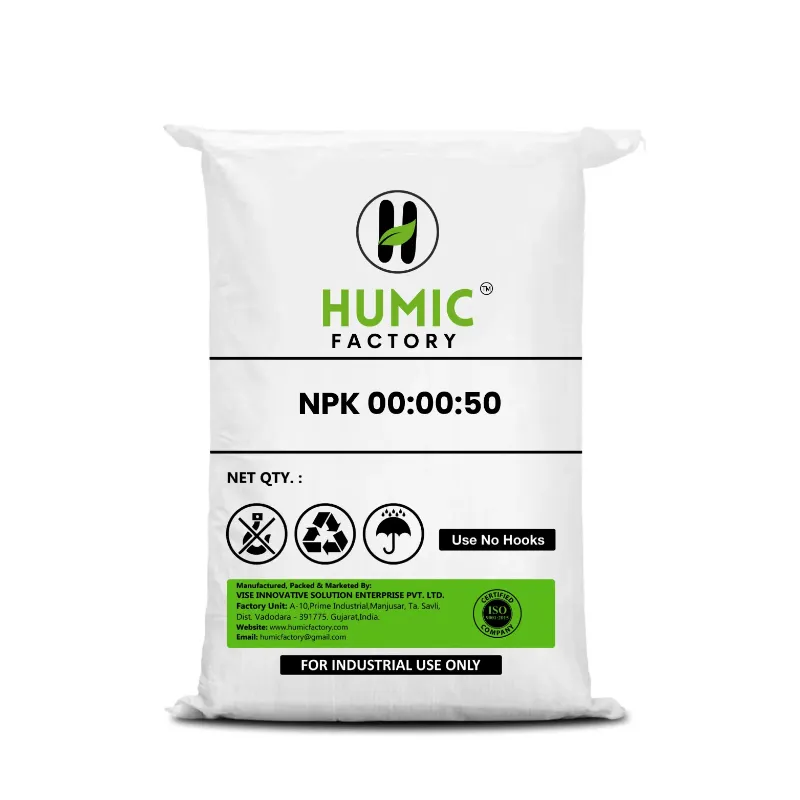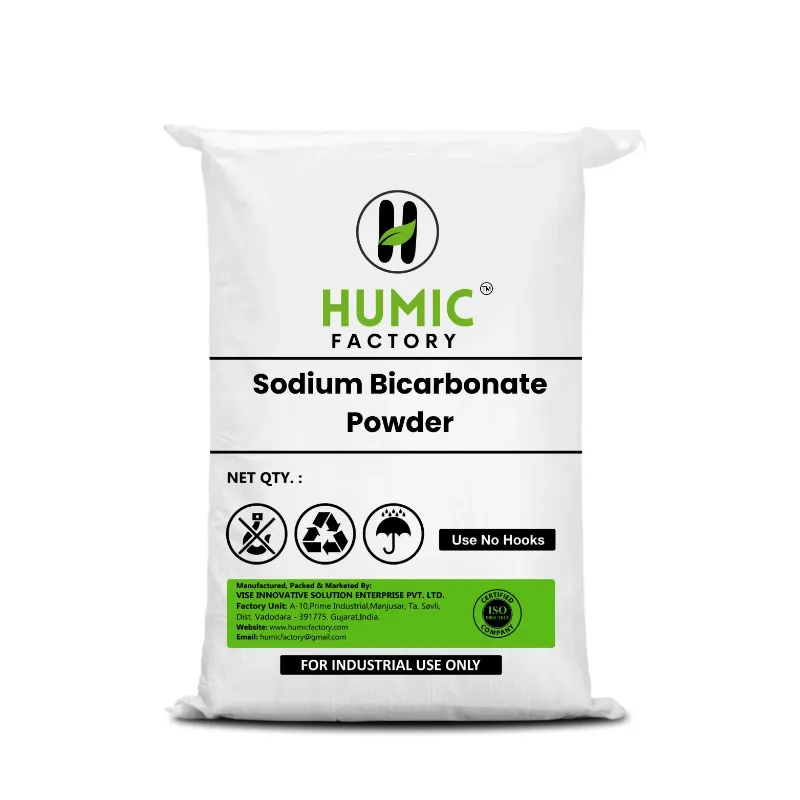NPK ratios are the nutrient codes for vibrant, lush, and productive gardens. The NPK ratios stand for Nitrogen (N), Phosphorus (P), and Potassium (K)—the three primary nutrients that every plant needs to grow, flower, and survive. Each number in an NPK ratio tells you how much of these three nutrients are in your fertilizer mix—letting you pair the right amount with your plant needs. NPK ratios ensure that your leafy vegetables, blooming flowers, or healthy lawn are getting exactly what they need when they need it. From 10-10-10 (balanced feeding) to 5-10-10 (flowering), each handful of NPK fertilizer is one step closer to your garden reaching its full potential.
What Are NPK Ratios and Why They Matter
Learning NPK Ratios is one of the most important steps towards establishing a healthy and productive garden. No matter what you're growing, whether it's vegetables, flowering plants, or you just need to maintain a lawn, using the right ratio of nutrients matter. This is where NPK ratios come in—NPK ratios are like a nutritional map for your plants.
Fertilizers provide combinations of nutrients. But NPK ratios can tell you the actual percentage of Nitrogen (N), Phosphorus (P), and Potassium (K)—the three most critical elements for plants. Understanding how you read and use these ratios will help you address your plant's specific needs, avoid over-fertilizing, and gain healthier plants with better growth, better color, and a higher yield.
What Are NPK Ratios in Fertilizers?
When you look at a fertilizer label, the NPK ratio will generally be presented as three numbers—like 10-10-10, 5-10-5, or 20-10-10. Each number reflects the percentage by weight of Nitrogen (N), Phosphorus (P), and Potassium (K) in the fertilizer.
Take a look at a 10-10-10 NPK fertilizer formula:
- 10% Nitrogen for leafy growth
- 10% Phosphorus for roots and flower development
- 10% Potassium for strength and resilience to stress
Then the remaining 70% is usually filler or carrier material. The NPK ratios are a way to match the fertilizer to the plant type and growth stage. By better understanding NPK ratios, you can fertilize smarter and more efficiently, resulting in a healthier garden.
The Importance of NPK Nutrients in Plant Growth
The NPK nutrients are unique and necessary for growth in your plants:
- Nitrogen (N): Creates lush, green foliage and is critical in the early stages of growth in your plant. Nitrogen helps to produce chlorophyll and is great for leafy food crops, such as lettuce or spinach.
- Phosphorus (P): Supports roots, flowering, and fruiting. Phosphorus allows the plant to store energy and transfer its energy, and it is essential for the budding and flowering stages.
- Potassium (K): Helps the overall plant health, increases stem strength, and helps the plant become more resistant to diseases, and helps regulate water. Potassium is very useful during the fruiting or seed formation stages.
With a good balance of these three NPK nutrients, you will ensure you are growing strong, firm, and high-yielding plants.
How NPK Fertilizer Formula Affects Your Garden
The NPK fertilizer ratio choice will directly affect how your garden performs. For example:
- A high nitrogen ratio (20-10-10, for example) will promote the fast growth of foliage and good for lawns or leafy green vegetables.
- A phosphorus-high ratio (5-15-5, for example) stimulates root growth and flowers which is great for bulbs and flowering plants.
- A potassium-high ratio (10-10-20, for example), offers protection for plant yield and is great for fruiting plants and late season plant support.
The right NPK ratio will depend on your plant's growth stage and type of plant to guide against under feeding or nutrient imbalances in the soil. Armed with the correct NPK ratios you should be able to significantly improve your plants vitality, flowering, yield, and without a doubt plant resistance to pests and weather stress.
Breaking Down NPK: The Role of Each Nutrient
When discussing a very successful garden, the use of fertilizer is only one component—but knowing what it is made of is important. This is when Understanding NPK Ratios is so important! These three letters—N, P, and K—aren’t simply letters labeled on a container; they refer to the basic components of plant food.
When you get a fertilizer that refers to either 10-10-10 or 20-10-10, you are reading the NPK fertilizer formula. The numbers in these formulas pertain to the percentages of NPK Nutrition-Nitrogen (N), Phosphorous (P), and Potassium (K)—these three elements each perform unique and crucial functions in plant health and performance.
Let’s explore what these elements do and what each one contributes to your plant manipulation.
Nitrogen (N) for Green Growth and Leaves
Of the three NPK nutrients, Nitrogen is the main nutrient that drives leafy growth. It increases the production of chlorophyll, the green pigment that plants use in photosynthesis, which is how they make their food.
- When your plants have the proper amounts of nitrogen:
- Leaves will develop faster and will be a lovely deep green
- The stems will become stronger and more erect.
- Vegetative growth will significantly improve overall.
If you notice that your plants are turning yellow or look stunted, that may be a symptom of nitrogen deficiency. A nitrogen-heavy ratio of NPK fertilizer ratio such as 20-10-10 is ideal for leafy greens such as spinach, kale, or lettuce. Nitrogen is important in the early growth stage of the plants because this is when foliage is the main focus of the plant.
Phosphorus (P) for Roots and Flower Development
Phosphorus is the nutrient that energizes root strength, flowering and seed production behind the scene! Phosphorus plays a central intrinsic role in a plant’s energy transfer, which is directly connected to cell division and plant growth.
Here's why phosphorus is essential for plants:
- Encourages deeper, stronger root systems.
- Encourages healthy flower and fruit formation.
- Encourages quicker plant maturity and increased-production.
When planting bulbs, fruit trees or flowering vegetables it is best to use phosphorus heavy NPK fertilizer formulas like 10-20-10 so your plants establish a solid root foundation and produce plenty of blooms. There is an increase of less flowers or a poorly established root system without phosphorus, Understanding NPK Ratios can help avoid this from happening before it happens.
Potassium (K) for Strength, Immunity, and Yield
Frequently overlooked, Potassium is an essential component of overall plant resilience. Potassium regulates a number of internal reactions, including regulating enzymes, maintaining a balanced water supply, and a range of stress "tolerance" mechanisms. In a potassium deficient state, plants become significantly more vulnerable to the effects of drought stress, frost, diseases, and lodge (fall over).
What Potassium does for your plants:
- Potassium strengthens stem and leaf cell walls - resulting in stronger management of photosynthetic outputs.
- Potassium enhances disease resistance/ tolerance to drought stress.
- Potassium enhances fruit size, flavour, and general yield quality.
We'll use a potassium based NPK ratio (10-10-20) at the flowering or fruiting stage of a plant's life cycle because that is when the plant will have the greatest benefit from a K based NPK - Think of root vegetables, and late season feeding, when root strength and immunity to disease is the priority over leafy growth and abundance.
Understanding NPK Ratios: What Do the Numbers Mean?
When you look at a fertilizer that is labeled 10-10-10 or 20-10-5, those numbers refer to the actual nutrient content of the fertilizer. The three numbers represent the NPK formula for fertilizer, and understanding NPK ratios is very important when it comes to feeding your plants, at the right rate and at the right time.
The numbers are actually for three separate nutrients:
1.N is for Nitrogen (responsible for leaf growth)
2.P is for Phosphorus (responsible for root and flower development)
3.K is for Potassium (responsible for overall strength and resistance)
So, if using a 10-10-10 NPK fertilizer, that means there's 10% of each NPK nutrient - nitrogen, phosphorus, and potassium - by weight, and all the rest of the percentage is made up with filler or carrier material to help spread nutrients evenly.
Taking a moment to understand what the numbers mean, gives you back control of your gardening results. It is how to fertilize the plant according to its stage of growth, overfeeding and underfeeding can be avoided.
Decoding the NPK Fertilizer Formula (e.g., 10-20-10)
Let’s take a look at an example: a 10-20-10 NPK fertilizer formulation.
- 10% Nitrogen helps plants develop healthy, green leaves and stems
- 20% Phosphorous supports healthy roots and flowering
- 10% Potassium supports the immune system of the plant, and manages pest, disease and weather stress resilience
This is a great fertilizer ratio for plants that are flowering and fruiting - meaning, when you want a boost of blooms with good root structure, but still have enough nitrogen and potassium to maintain balance and vitality of the plant.
Understanding NPK formulations like this one helps gardeners feed their plants from what the plant is doing, not from just what it looks like.
How to Match NPK Ratios to Plant Stages
Plants need different nutrients at different stages of their growth. NPK ratios can help you refine your gardening approach.
- Seedling phase: For seedlings use a starter fertilizer with relatively high phosphorus levels like 10-20-10 to promote early root growth.
- Vegetative phase: If you are growing plants that are mostly leafy the use of high-nitrogen blends like 20-10-10 is appropriate. This is also used for lawn grasses.
- Flowering & Fruiting stage: For flowering and fruiting most fertilizers like 5-10-10 or 10-20-20 will appropriately affect blooming or fruit yield during this stage.
If you adjust NPK fertilizer formula levels in response to the growing phase of the plants, you will use only what they need at that time, maximizing yield and minimizing waste.
Interpreting Fertilizer Labels with Confidence
Once you learn what NPK nutrients do and how to match them to your particular garden, reading fertilizer labels becomes manageable and exciting.
Here's what to pay attention to:
- NPK Ratio: The three numbers that cover the basic formula.
- Guaranteed Analysis: This section tells you the percentage of each nutrient.
- Recommended Use: Many products will tell you what plants or growth stage they are recommended for.
When you can read these labels, you are no longer guessing—you are gardening with information. Knowing your NPK ratios changes the experience of buying fertilizer.
Choosing the Right NPK Ratio for Your Garden
Choosing a fertilizer doesn't simply mean choosing the fertilizer with the highest numbers, it means choosing the fertilizer with the right NPK ratio for your type of plant and your specific growing conditions. Understanding NPK ratios enables targeted nutrition, enhanced performance in plants, and avoidance of over-fertilization and nutrient imbalance mistakes.
A typical NPK fertilizer formula will differ whether you are growing leafy greens, colorful flowers or managing a lawn. After you understand how NPK nutrients support types of growth, you are able to care for your garden in a targeted way.
Ideal NPK Ratios for Vegetables, Flowers, and Lawns
Different plant groups require entirely different nutrition profiles, which is reflected in their NPK ratios:
- Vegetables:Leafy vegetables such as spinach, lettuce, and cabbage benefit the most from higher nitrogen fertilizers, otherwise known as 20-10-10, helping those plants develop tender leaves. On the other hand, fruiting vegetables such as tomatoes or peppers will require a more balanced NPK ratio or even a phosphorus rich ratio like 10-20-10, which helps develop flowering or fruiting.
- Flowers and Ornamental Plants: Blooming plants like roses, marigolds, and hibiscus require higher phosphorus and potassium levels to develop large colorful blooms, and to form stronger stems. Choose NPK rations like 15-30-15 or even 10-20-20 to best develop flowering capacity.
- Lawns and Turf: Rather than the traditional ratio of 10-10-10 for gardens, lawns are best suited to grass based fertilizer. Lawns grow best on higher nitrogen to develop dense growth and green colour with a builder formula of 30-0-10 or 25-5-10 especially during their growth phase.
If you follow the appropriate selection of formula based on the plant type, you will be nearly guaranteed to provide the appropriate NPK nutrients necessary for the healthy development and performance of that plant type.
Customizing Fertilization with the Right NPK Nutrients
Every garden is unique! Factors such as soil type, climate, species of plants used, and even the size of the pots you’re using can influence how much fertilizer, and what kind of fertilizer, your plants will need. This is why it is so important to customize your fertilizer plan, and Understanding NPK ratios gives you the ability to.
For example:
- If your soil contains good phosphorus levels, but not enough nitrogen, you would want to go with a high-nitrogen fertilizer such as 20-5-10.
- If your flowers are barely blooming, consider switching to a high phosphorus formula such as 10-30-20.
It can be very useful to have your soil tested. Soil tests will tell you what nutrients your soil contains, which helps you decide on your NPK fertilizer formula based on what the plants actually need, not just what you think they need.
Seasonal Changes and Adjusting NPK Applications
As the seasons change, so do the nutrient needs of your plants. By adjusting your NPK ratios to your plants growth cycle, you can shape your garden throughout the year:
- Spring: For most plants, spring is the growth phase, so a nitrogen-enhanced product such as 20-10-10 will help kickstart the production of foliage and stems.
- Summer: With flowering and fruiting, transition to a 10-20-20 or 5-10-10. This formula will maximize blooms, and yields.
- Autumn: With plants winding down, now is the time to provide a good potassium product most likely found in a formula such as 5-5-15 which will build cold and environmentally tolerant plants as well as build root storage.
- Winter (for your perennials or in a greenhouse): Unless there is active growth, I suggest applying little fertilizer. If you have to use fertilizer, a low-nitrogen product is appropriate, if only because once spring arrives everything will generally accelerate beyond fertilizer potential anyway.
To recap, adjusting your fertilizer strategy seasonally based on weather, plant age and bloom cycles is the key to successful gardening over the long term.
The Role of Soil Testing in Fertilizer Selection
Before you can ensure you get the maximum performance from your plants, and to avoid wasting fertilizer, the best place to start is with a soil test. Just as a physician takes your vitals before prescribing anything, a soil test will arms you with the necessary data you will need to most accurately feed your garden. It allows you to create an informed decision about the best formula for NPK fertilizer for your soils requirements.
Soil testing is the very starting point to interpreting and understanding NPK ratios and how they apply to your garden, it provides you the specific counts of what nutrients are available, what nutrients would be beneficial, and how much of each nutrient your soil is lacking. Without a reliable soil test, any idea of applying fertilizer is a guess at best, which will lead to: overfeeding, underfeeding, or nutrient-ignoring.
Why Soil Testing Is Essential Before Applying NPK
Every garden presents its own variety, and nutrient levels are determined by history of fertilizations, plant management, organic matter and environmental conditions. One mistake the gardener commonly makes is applying the same NPK ratios every year, oblivious to what the soil actually requires.
Investigating why soil testing is important:
- Identifying nutrient restrictions, for example, phosphorus, or potassium restrictions.
- Identifying nutrient excesses that can injure plants or contaminate groundwater.
- Identifying soil pH, affects how well plants can absorb the NPK nutrients.
Soil testing first avoids guesswork, allowing for efficient and effective use of fertilizer. Not only will plants grow better, money will be saved, and the environment will be protected.
Using Test Results to Adjust NPK Fertilizer Formula
Once you obtain the results of your soil test you will see the values for the target nutrients; nitrogen (N), phosphorus (P), and potassium (K) plus the micronutrients that include calcium, magnesium, and sulfur. These values are meant to help you determine your next step which was choosing or modifying an NPK fertilizer grade.
For examples:
- When the soil has an adequate amount of phosphorus, but nitrogen is low, then you would look for a high nitrogen blend, such as 20-5-10.
- Where potassium is low and nitrogen is high we would want a balanced ratio, so we would use a 10-5-20 blend.
- Where soils are balanced but depleted we'll look at blends like 10-10-10 or 15-15-15 to push the overall nutrient numbers forward.
Knowing the N-P-K ratio permits you to understand the soil test results and select a fertilizer that can correct existing nutrient deficiencies without providing excess nutrients that already exist in the soils.
Avoiding Deficiency or Overload with the Right Ratio
Over-fertilization is just as damaging as under-fertilization. Excess nitrogen, for example, can cause lush leafy growth instead of flowers or fruit. Too much phosphorus can bind to other nutrients and render them unavailable to the plant. A potassium overdose, while not usually harmful to plants, can cause root stress from salt buildup. Soil testing will help avoid these mistakes by allowing you to:
- Apply nutrient input necessary based on existing levels.
- Prevent nutrient lockout, where excess of one nutrient will block the uptake of another nutrient.
- Help the environment by avoiding runoff and leaching of nutrients.
By knowing your soil needs and using the correct NPK fertilizer, you will achieve the correct nutrient ratios, resulting in healthier roots, better blooms, and increased yields without the waste and harm.
Common Mistakes When Using NPK Fertilizers
NPK fertilizers can enhance the health of plants and productivity in a garden, but only if applied properly. While they are valuable nutrients, if applied improperly, they can stress plants, create an imbalance in the soil you could affect the plants and their environment for many years to come. Many gardeners make common mistakes: applying too much product, applying the wrong type of fertilizer for the right plant, etc. Next, you will learn the importance of understanding NPK ratios and how to make application mistakes by correcting them.
In this post we will break down some of the most common mistakes and how you can achieve better application techniques by understanding NPK nutrients.
Over-Fertilizing and Misjudging NPK Ratios
One of the most common mistakes is presuming more fertilizer gives you better growth. In the real world, over-fertilizing—especially with the wrong NPK ratios—can lead to issues. For instance, applying high levels of nitrogen can push the plant to grow so lush with soft leaves that will become aphids and the like because they are so soft and juicy. High levels of phosphorus may inhibit the acquisition of trace micronutrients like iron and zinc.
As a rule of thumb, no matter what NPK fertilizer formula you end up using, you must pay attention to the dos and don'ts of the application. Going too heavy on the dosage or applying at too regular of an interval can do all of the following:
- Burn roots or leaf tissue.
- Contribute to nutrient runoff and/or impact water quality.
- Poor flowering and or fruiting.
When you have learned about the ratios of NPK you learn to build a more systematic way of choosing a formula for your conditions and the stage of development of the plant. You learn to use just enough fertilizer to help, and avoid using too much fertilizer that can hinder growth.
Ignoring Plant-Specific NPK Nutrient Needs
Not all plants respond to the same nutrients in the same way . The disadvantages of a one size fits all approach to plant nutrition is often disastrous. For example:
- Leafy greens like spinach or kale need nitrogen (20-10-10) in higher amounts to develop strong leaves.
- Flowering plants like roses need phosphorus and potassium (10-20-20) to develop bloom quality.
- Lawns need nitrogen, and respond best to a higher nitrogen fertilizer application, but usually do not require much phosphorus unless newly seeded.
If you do not modify your NPK fertilizer formula to suit the plant type, you run the risk of emphasizing the wrong nutrients and therefore provide weak root development for one plant type due to the emphasis on a different nutrient with another plant type (poor yields or stunted plants are a common example).
Having an understanding of NPK ratios allows you to be precise in applying different types of nutrients to each type of plant in your garden, leading to improved output or stronger results.
Misreading Labels or Skipping Soil Testing
Fertilizer labeling can be perplexing for even experienced gardeners, and gardening voice often overlook the wealth of information a fertilizer label can contain, or they neglect to read the label or conduct a soil test in advance. The information contained on a label, especially the NPK ratios and the application rates are very important elements to getting it right.
Sustainable Gardening Using NPK Fertilizers
Sustainable gardening is not simply the growing of plants, it is the growing of plants in a way that rehabilitates the soil, conserves the earth and produces sustainable production over time. Many people assume that only organic fertilizers are sustainable, however, NPK fertilizers can also be used in sustainable gardening when done with consideration.
By realizing the benefits of the NPK ratios, applying responsible amounts in the right order, and understanding the role of synthetic vs. natural inputs, you too can have the benefit of plants that are heavier, stronger and healthier without harming the natural ecosystem. Let's discuss the uses of NPK nutrients more environmentally responsible.
Eco-Friendly Application of NPK Fertilizer Formula
Runoff and pollution are highly concerning attributes of synthetic fertilizers. When nutrients are overapplied or poorly timed (say for example right before a rain), these excess NPK nutrients can leach into water systems and cause harmful algae blooms, causing irreparable harm to aquatic life and ecosystems. Eco-conscious application practices can help minimize the potential runoff if you are at all worried about this.
Here is a quick, Snap Edition guide to safe NPK application:
- NPK fertilizers should not be applied in the heat of the midday sun, because some will evaporate, or when it is raining, because it can be washed away. Early morning and late afternoon times are best.
- NPK should not be applied any time before a rain event, as a heavy rain will wash all the nutrients into the ditch.
- Use slow-release formulations, these release nutrients slowly/will not wash away as fast.
- Lastly, June should water the soil lightly after application, to allow nutrients to settle into the soil and absorb.
Using controlled methodology, landscape contractors and homeowners can alleviate runoff by applying NPK ratios in a sustainable fashion, while seeing the benefits of NPK ratios on vegetatively, being conscious of weather and soil conditions.
Blending NPK Nutrients with Organic Matter
A truly sustainable approach is combining synthetic NPK fertilizers with organic matter (a combination of compost, manure, or vermicompost). This balanced operation is the best of both worlds- the immediate availability of nutrients provided by the NPK fertilizer formula and the long-term soil health and benefit of organics.
The advantages of blending include:
- Better soil texture and moisture retention.
- Greater microbial activity to support nutrient cycling through soil.
- Reduced reliance on synthetic inputs.
For example, you may choose to mix a balanced NPK ratio of 10-10-10, into compost in order to enrich the compost and give the plants immediate nutrient boost. The other side is that the artificial nutrient blend can buffer or mitigate any chance of harshness of synthetic nutrients to create a more resilient and self-sustaining garden.
Reducing Environmental Risks with Proper NPK Use
Sustainability is about lowering damage while maximizing benefits, which is a huge part of proper use of NPK. Synthetic fertilizers damage the earth in a number of ways: soil degradation, pollution of waterways and releasing of GHG. Used wisely, NPK nutrients will enhance healthy and productive personal gardens.
Here are ways to limit environmental impact:
- Test your soil for nutrient content to avoid unnecessary application of abundance.
- Use specific NPK ratios that relate to types of plants and different growth periods.
- Store fertilizers where they can not be easily accessed by the general public and out of direct sunlight and moisture.
- Educate others on the reasons to thoughtfully apply and the importance of NPK for environmentally sustainable gardening.
Through thoughtful use of the quantity actually required to achieve plant health and yield, and the when and how of application, NPK fertilizers can be used as a tool for planning for soil and plant health as well as creating ecological stewardship.
FAQs
Q1. What is the meaning of NPK in fertilizer?
NPK stands for Nitrogen, Phosphorus, and Potassium—the three major NPK nutrients required for plant growth and development.
Q2. How do I choose the right NPK fertilizer formula?
By using soil testing and which plants you are working with, you can use NPK ratios to provide balanced nutrition using the right NPK fertilizer formula.
Q3. What are the signs of wrong NPK ratios in plants?
Yellowing leaves, weak and/or peeling roots, or poor flowering may indicate that NPK ratios are incorrect or nutrient levels are not right.
Q4. Can I use one NPK ratio for all garden plants?
No, since different plants and stages need different NPK nutrients, it is necessary to customize the NPK ratio for the best results.
Q5. Are organic fertilizers better than synthetic NPK?
Both organic and synthetic have advantages; organic helps build soil health, while synthetic NPK fertilizer formulas have targeted, fast-acting nutrition.
Conclusion: Mastering NPK Ratios to Boost Plant Health and Garden Success
If there’s one secret to a lush, flourishing garden, it's not just sunlight or water - it’s the right nutrients at the right time. Knowing NPK ratios comes first.
This is important whether you are cultivating leafy greens, flowering plants, or fruiting plants, using the correct NPK fertilizer formulation allows you to plan your care to meet their needs consistently and precisely. Nitrogen (N). Phosphorous (P), and Potassium (K), these three nutrients are essential to making healthy and fruitful plants.
Recap of Key NPK Nutrients and Their Roles
At the heart of any fertilization program, you need to maintain a good balance of NPK nutrients:
- Nitrogen (N) encourages leafy, vigorous green growth
- Phosphorus (P) strengthens root systems and promotes flower and fruit production.
- Potassium (K) increases disease resistance, strengthens stems, and improves drought resistance.
Together, these nutrients provide the energy your plants need from their roots to their bloom. Choosing the proper NPK ratio makes sure each plant gets the balances of support at the proper growth stage.
Take Control with Soil Testing and Targeted Fertilizing
All gardens are different, including their soils; that's why soil testing is among the smartest things a gardener can do. Soil testing helps you understand what nutrients and ph levels your soil currently has. You can start improving your fertilization application by identifying the best fertilizers for each of these scenarios with a soil test, it allows you to:
- Identify existing missing and/or excessive NPK nutrients according to your plants.
- Limit the potential to over fertilize or under fertilize your plants.
- Better identify an NPK fertilizer that is correct for your scenario.
In turn, targeted soil management will lead to healthier plants and reduce waste, as well as prevent nutrients run off into the environment.
Use NPK Ratios Wisely for a Lush, Vibrant Garden
When you apply NPK ratios correctly, you transition from guesswork to precise gardening. You'll know to use high-nitrogen when you need to encourage green foliage, how to approach phosphorus-heavy blends during any flowering period, and when to apply potassium to support the plant's immune system and fruits as they form.
What does this work look like? A garden that is greener, with vibrancy in every bloom, deeper roots within the soil, and higher yields. Whether you grow at the home garden or commercial scale, using NPK ratios effectively gives you control, confidence, and consistent outcomes.





